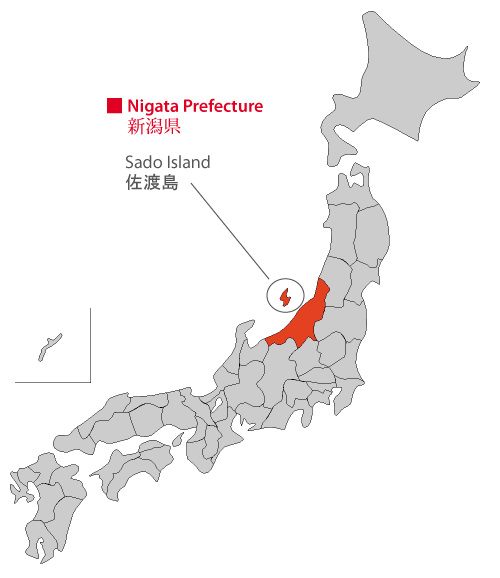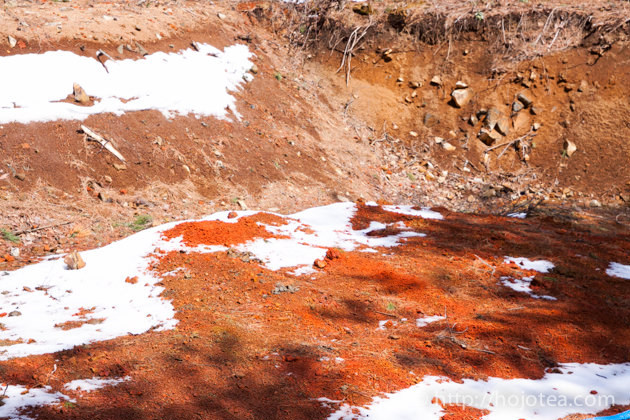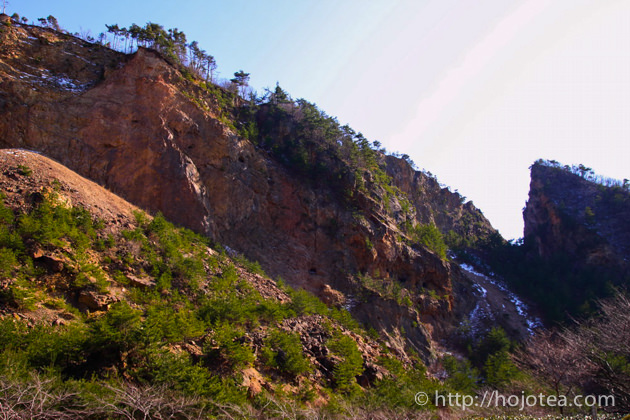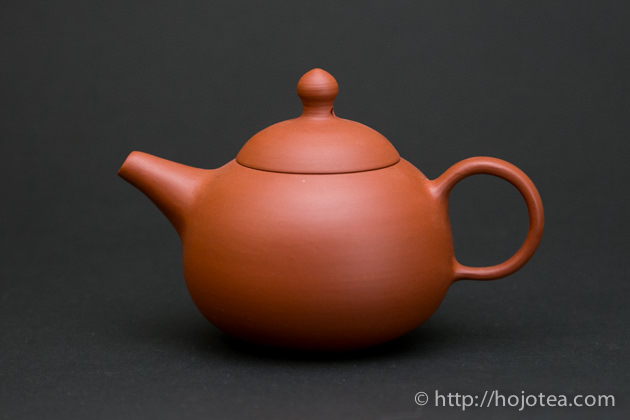Collection: Mumyoi Joaka
The red clay teapot traditionally produced in Sado Island is called Mumyoi Yaki. By tradition, the Mumyoi clay was collected from the tunnel inside the Aikawa gold mine. However, since the gold mine was shut down, the entryway to the mine cave was restricted and the artist in Sado was finding the clay from the alternative source, mostly in the mountain right next to the Aikawa gold mine. At Sado Island, the clay collected from the gold mine is called as Mumyoi Joaka to differentiate from the mumyoi clay collected from the mountain.


Mumyoi clay near the Aikawa gold mine


Mumyoi Joaka from the Gold Mine tunnel
The mumyoi clay collected inside the gold mine tunnel was called Joaka. The natural filtration of clay through the rocks and lands makes Joaka clay extremely finer particle size as compared to the standard mumyoi clay. In Edo era, Mumyoi Joaka clay was used as a medicine to stop bleeding before the teapot became a popular product in Aikawa town. According to the history, the medicine know as "Mumyoi" was very popular and expensive at that time. The only definition of Joaka clay is that it is collected inside the gold mine and it consists of finer particles. In fact, the fineness of the particle size is a very important element. The finer clay can be fired at lower temperature and the clay becomes very porous. It gives greater influence to the taste of tea thanks to the large surface area.

Aikawa gold mine

We happen to obtain the Mumyoi Joaka clay
Despite the Mumyoi Joaka clay is really limited and rare, Watanabe Tozo has got Joaka clay. The clay was collected from one of the gold mine cave called Ogiri tunnel. We extended out a series of test to confirm the outcome of different firing temperature on the taste of tea and the appearance of taepot. After several months of study, we managed to finalize the ideal parameter for making teapots. The mumyoi joaka clay enhances the body of tea. It establishes the flavour and the taste of tea richer. The base characteristic of this clay is similar to that of Shimizu Ken’s mumyoi clay teapot. It is suitable for fermented tea in particular. 
Mumyoi Joaka crude clay

Ogiri golden mine tunnel
No more source of Joaka clay due to the submission for the world heritage
Now Japanese government is attempting to apply Aikawa gold mine to the world heritage. Since two years ago, the assemblage of the clay around the Aikawa gold mine has been prohibited. The prohibited area also includes the mountain where our artists used to collect the clay. The artists on Sado Island have to survive only with the existing clay that they have stocked up so far. Needless to say, there will be no more opportunity to collect the Joaka clay in the future.

-
100 Watanabe Tozo Joaka Clay Houhin
![]()
- Regular price
- RM930.00 MYR
- Sale price
- RM930.00 MYR
- Regular price
-
- Unit price
- per
Sold out

